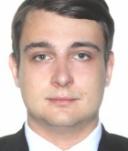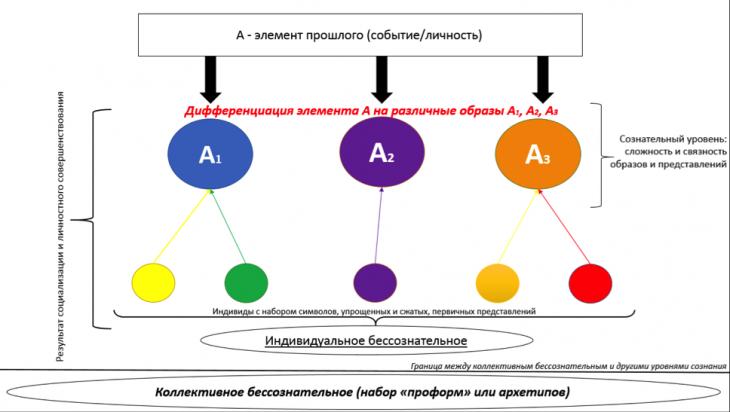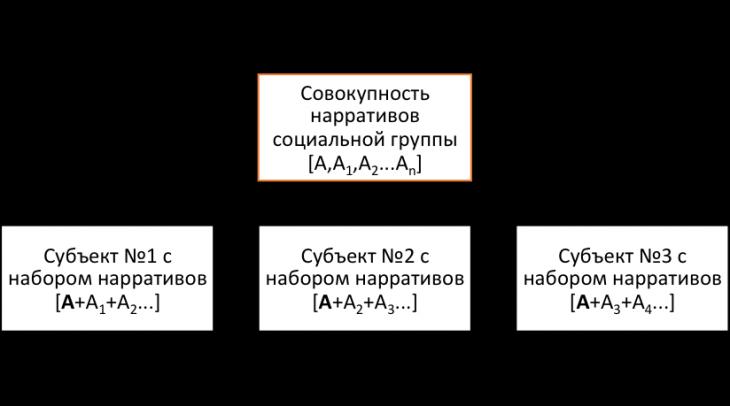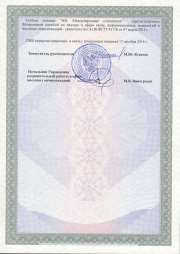|
MAIN PAGE
> Back to contents
World Politics
Reference:
Gadalin D.Y., Imanalieva M.A.
The mechanism of memory policy implementation in the context of the social framework of "collective memory".
// World Politics.
2023. ¹ 1.
P. 52-59.
DOI: 10.25136/2409-8671.2023.1.36063 EDN: LDATWY URL: https://en.nbpublish.com/library_read_article.php?id=36063
The mechanism of memory policy implementation in the context of the social framework of "collective memory".
Gadalin Dmitrii Yur'evich
Bachelor's Degree, Department of Comparative Political Science, Moscow State Institute of International Relations (University) Ministry of Foreign Affairs of the Russian Federation
119454, Russia, Federal city of Moscow, Moscow, Prospekt Vernadskogo str., 76

|
gadalindimitriemgimo08071999@gmail.com
|
|
 |
|
Imanalieva Mariya Almazovna
Bachelor's degree, Department of Labor Law, Lomonosov Moscow State University
76 Vernadsky Avenue, Moscow, 119454, Russia

|
gadalindimitriemgimo08071999@gmail.com
|
|
 |
|
DOI: 10.25136/2409-8671.2023.1.36063
EDN: LDATWY
Received:
05-07-2021
Published:
04-04-2023
Abstract:
The purpose of the article is to analyze the mechanism of memory policy in the context of the phenomenon of "collective memory" by M. Halbwaks. The policy of memory is an orderly action of political elites to form the desired set of images and representations of the past by society. Such a strategy makes it possible to solve several problems, in particular the problem of legitimacy, as well as the problem of argumentation of domestic and foreign policy programs chosen by the state, which may also set themselves the task of distorting their own historical past and worsening relations between the two states. The processing of collective memory as a component of social consciousness has undergone a serious evolution and today can represent a lot of aggressive strategies. The scientific novelty of the research is the use of a combined approach to understanding the phenomenon of collective memory and its processing. A combined approach based on the works of M. Halbwaks in the field of sociology and psychoanalysis based on the psychology of the unconscious Z. Freud, as well as the theory of the collective unconscious and its archetypes by C.G. Jung, allows us to identify the interdependence between the differentiation of images of the historical past and the levels of consciousness of the individual. A scheme of interconnection, as well as a scheme of sampling narratives of public consciousness in order to form a universal set of images and representations, has been developed. The conclusions confirm the validity of M. Halbwax's method and its correlation with psychoanalysis, and also indicate the danger of connivance on the part of the Russian state in relation to the aggressive policy of memory in the countries of the post-Soviet space and the former socialist bloc.
Keywords:
collective memory, social consciousness, politics of memory, psychoanalysis, collective unconscious, social frame, frustration, nation-building, indicator, image
This article is automatically translated.
You can find original text of the article here.
To date, the policy of memory has become an integral part of the state policy of many countries, far beyond the post-Soviet space, Central and Eastern Europe. But it is in the states of these regions that the memory policy has reached its peak, in a number of countries becoming one of the foundations of nation-building policy, simultaneously becoming a threat to the security of the foreign policy borders of the Russian Federation, largely due to the emergence of hostile, and in some cases aggressively disposed towards Russia and Russian society social groups in neighboring countries. A lot of literature, both domestic and foreign, is devoted to the study of memory politics. Among domestic researchers, it is worth highlighting S.P. Potseluev [8] and O.Y. Malinova [4,5,6], who considers the politics of memory as an area of broader symbolic politics. The phenomenon of memory is widely covered in the works of philosophers, sociologists and cultural scientists, but none of the approaches is able to fully explain the existing patterns of memory, therefore a correlation of approaches is required. The interest in the politics of memory is due to the fact that, having passed through three stages of its formation during the XX century, it began to largely replace the ideological attitudes in society that provided earlier striving forward in contrast with the politics of memory, which appeals to the past and forms the internal system of society and its interaction with neighbors based on previous eras and examples of interaction. According to Yu.A. Safronova, the policy of historical memory is a full–fledged system of "interactions and communications of various actors regarding the political use of the past" [10]. This direction is formed during the search for national identity, but since this process is long and multifaceted, the memory policy itself can undergo serious changes. The policy of memory presupposes the presence of a subject in the person of the state / political elites of the state, society as an object of influence of the policy of memory, a set of tools of influence, in particular the media, education, institutions of (national) memory, which perform the function of revising the established interpretations of national history and the search for evidence for new standards in the history of the country, as a result - the stated as a true theoretical and factual basis corresponding to the interests of the state and the population, designed to provide dominant narratives in the public consciousness of the population [6]. It is fundamental that, as a rule, such judgments are very often in the nature of false conclusions and distortions that program the public consciousness of the population to perceive and interpret the events of the past and the derivative processes of the present through the prism of positions and points of view already imposed by the state power, that is, political elites seek to form a convenient collective memory of the population, which would allow automatically to ensure the legitimacy of the ruling elite[4]. But such a task is really difficult, largely because of the specifics of collective memory. Approaches to understanding the phenomenon of memory were supplemented throughout the previous century. M. Halbwax occupies an important place in these arguments, since this French sociologist devoted a large body of research to the study of "collective memory", which can be considered as a mutually shared set of ideas about the past within a given social group [2]. Thus, M. Halbwaks concludes that two categories of memory should be distinguished, namely, individual memory (personality memory based on one's own personal ideas) and collective memory [13]. M. Halbwaks was largely guided by the legacy of E. Durkheim, who defended the right of sociology to the status of an independent academic discipline [3]. However, in such a situation, the phenomenon of "collective memory" comes into direct contradiction with the installation of E. Durkheim, since this phenomenon must be considered as the intersection of a number of disciplines, primarily history and social psychology, since on the one hand, collective memory defines historical events and processes, significant historical figures as objects, and on the other On the other hand, it has such characteristics as construction and variability, the gradual strengthening of the sacredness of a number of events and images of the past. Therefore, M. Halbwax's approach, although it had a serious impact on the study of the phenomenon of collective memory, at the same time proved to be untenable due to the need to attract additional academic disciplines for study. The advantages of the reasoning of the French thinker were proved by K.G. Jung, who, studying the problems of individual consciousness, developed a theory of the collective unconscious, continuing the reasoning of Z. Freud on the psychology of the unconscious [12]. The classical scheme of C.G. Jung allows us to consider each individual as a being with a similar set of "professional forms" that fill the collective unconscious [16]. Symbols and images are formed from these "proforms" in the future, but since within the framework of a social group, which can be represented as a separate subject of intergroup relations within society, and society as a whole, there is an ordered set of representations, the theory of M. Halbwaks is also true because his concept of "social the framework of memory" sets the limits of ranking of narratives dominating in a social group [14], from which it can be concluded that the foundation based on professional forms is universal for each individual, but their filling and subsequent formation of no longer empty cells, but coherent representations occurs on the basis of the distribution of semantic existing within the framework of public consciousness, taking into account the long historical experience dominant. Such a conclusion, applicable to such a social group as a whole society, can be presented in the diagram below: 
Figure 1. Formation of differentiated images of the past (compiled by the author). The primary or most primitive level of memory is the collective unconscious, which is an empty "proforma" or archetypes, but at this level the presence of biopsychic universal attitudes, natural for the nature of homo sapiens, is allowed. The proforma data as empty cells are filled with a set of symbols available in the location of the society, which can be interpreted as an indicator indicating the presence in the memory structure of a representation of a specific event or historical person, but at the same time not reflecting a substantive, detailed image [15]. It is the archetypes that serve as the basis for racial, family or national and other differentiation [16]. Therefore, the next level is the individual unconscious, where, taking into account socialization and personal development, unique symbols and indicators are already formed, which then at the conscious level can unfold into full-fledged images and representations, often shared by other members of the social group, as a result of such an intersection, a closeness of views is formed. But the fundamental thing is that the variety of factors determines the variety of images for a particular event/process. Therefore, the chain looks interdependent, since the number of images is influenced not only by socialization and the inner world of the individual, but also by objective reasons similar to the factors of formation of public consciousness such as: ? Natural and climatic conditions, in particular difficult survival conditions, an increased need for security due to the lack of natural boundaries of protection [9], etc. ? Conditions of well-being of members of society, level of education and medicine. In the absence of such conditions, a state of frustration can develop in society [7], which can also be used by the political elite in order to preserve power and direct the accumulating aggression of the population to a third-party object. This practice was especially popular after the First World War, when in Italy and Germany, largely due to the frustrating aggression of the population due to the significant deterioration of living and working conditions, it allowed radical right-wing groups to come to power, which then, appealing to the past injustice of the victorious countries in relation to Italy and Germany, only strengthened their legitimacy. ? Forms of social structure that determine the nature of interpersonal and intergroup relations and the potential angle of perception of historical events and phenomena. For example, according to the theory of "communal socialism" by A.I. Herzen, Russia, largely due to the presence of the peasant community as the basic unit of society, can switch to socialism bypassing capitalism, since historical experience, and the peasant community has existed for long centuries, starting with the Old Russian state, leads to the development of persistent ideas about both the historical past and about the ideal way of the present and the future. In such a society, the ideas of collectivity and the fairness of comradeship will be widely spread. On the contrary, in the United States of America for a long time there was a form of individual farming, so socialist ideas in such a society will always be in a state of decline [17]. Thus, it is obvious that the political elite, within the framework of implementing its own course of memory policy aimed at strengthening one of the acceptable ideas about the historical phenomenon, faces at least two problems: 1. The need to remove an "undesirable" image, and the stronger this image is in the public consciousness, the more difficult it is to remove it, you can only count on the temporary concealment of this element in the memory structure [5]. For example, in the 1990s, radical market reforms were carried out in the Russian Federation, which did not yield successful results in the short term, led to increased frustration among the population and doomed the rapid democratic transit to failure, largely due to the fact that democratic narratives were on a par with the manifestation of injustice and difficult living and working conditions. Therefore, during this period, feelings of "nostalgia" for the Soviet era began to develop among the population, which resulted in large-scale support for the Communist Party in the second half of the 1990s. The political elite of Russia during this period could not remove the strong ideas of the population about justice and collectivity, since the moral and value vacuum of the population that had arisen was not filled. 2. The political elite is forced to choose their preferred narratives only from the complex that the collective memory of society has. For example, the personality of Catherine II in Russian history is differentiated into several images, in particular the image of a caring, enlightened sovereign who provided Russia with stable prosperity and power in Europe and on the Black Sea. However, in parallel with this, there is also the image of a tyrant ruler, who for more than thirty years has been helping the nobility in everything, and especially in strengthening the oppression of the serf peasantry and working people. It is obvious that the individual's own inner world, his views on society and the political life of the country are placed in one or another "camp" of the image of Catherine II. Therefore, if the state, as part of the implementation of the memory policy, sets itself the goal of forming only one semantic dominant, then it is necessary to remove the associated image of the ruler or process, for example, to pay more attention in the education system to the achievements of a historical figure, avoiding or, at least, reducing the emphasis on the failures and problems of the population that existed at that time: 
Scheme 2. Search for a universal narrative of memory (compiled by the author).
The diagram shows a certain set of narratives available in the memory structure of a social group in relation to a specific event/process, however, it is important to take into account that the set of narratives of an individual is unique, but since there is a common narrative for all present, it can be used by political elites to form a single dominant, and unique characteristics will be leveled, withdrawn. Moreover, such a principle of choosing a universal dominant makes it possible to further ensure the consolidation of social forces to ensure social support for state projects, including the revision of established interpretations of historical events [7]. Conclusion Thus, collective memory, which M. Halbwaks worked on, is a component of public consciousness, which, in turn, is a flexible and dynamic category, since it is represented by a multitude of images and symbols that a whole society has, but at the same time, public consciousness is a fairly solid foundation of the prevailing narratives, formed in the OS during a long historical experience. In this regard, it is important to emphasize that even despite the abundance of different interpretations of specific events and processes of the past, the presence of the element itself in the structure of the OS, on the basis of which variations of images and narratives are already formed, is integral. However, in collective memory there are limits (frames) of the ranking of images, therefore, this concept, which was operationalized by M. Halbwaks and which for a long time was in the field of criticism from researchers such as M. Blok [1], can not only be evaluated from the standpoint of sociology or psychoanalysis, but also quantitative research, and also, to assess in practice the potential of the memory policy of the post-Soviet states and the countries of Central and Eastern Europe in order to form a more complete understanding of the further steps of unfriendly governments and develop strategies to prevent anti-Russian rhetoric and propaganda.
References
1. Assman A. Novoe nedovol'stvo memorial'noi kul'turoi. — M., 2016. S.19.
2. Emel'yanova T.P., Kuznetsova A.V. Predstavleniya kollektivnoi pamyati ob epokhe Petra I i ego lichnosti u predstavitelei razlichnykh sotsial'nykh grupp // Psikhologicheskie issledovaniya. 2013. T. 6, ¹ 28. S. 9. URL: http://psystudy.ru (data obrashcheniya: 28.06.2021).
3. Kuznetsov Yu.V., Kravtsov V.A., Kibitkin A.I. Sotsial'no-filosofskie kontseptsii sotsializatsii lichnosti (E. Dyurkgeim, Zh. Piazhe) // Vestnik MGTU. 2012. ¹1. S.5. URL: https://cyberleninka.ru/article/n/sotsialno-filosofskie-kontseptsii-sotsializatsii-lichnosti-e-dyurkgeym-zh-piazhe (data obrashcheniya: 04.07.2021).
4. Malinova O.Yu. Aktual'noe proshloe: simvolicheskaya politika vlastvuyushchei elity i dilemmy rossiiskoi identichnosti. M.: ROSSPEN, 2015.
5. Malinova O. Yu. Konstruirovanie smyslov: Issledovanie simvolicheskoi politiki v sovremennoi Rossii. M.: INION RAN, 2013. S.12-13.
6. Malinova O.Yu. Metodologicheskie voprosy izucheniya politiki pamyati: Sb. nauchn. tr. / Otv. red. Miller A. I., Efremenko D. V. M.-SPb: Nestor-Istoriya, 2018. 224 s.
7. Oskolkov P. V. Fenomen natsionalizma: kontseptualizatsiya i tipologii // Sovremennaya Evropa. 2020. ¹ 3. S. 108–116.
8. Potseluev S. P. «Simvolicheskaya politika»: K istorii kontsepta // Simvolicheskaya politika. Vyp. 1: Konstruirovanie predstavlenii o proshlom kak vlastnyi resurs. M.: INION RAN, 2012. S. 17–53.
9. Prokudenkova O. V. Rossiya: Evropa ili Aziya polemika P. N. Milyukova s evraziitsami o roli geograficheskogo faktora v razvitii russkoi kul'tury // Vestnik RKhGA. 2006. ¹1.
10. Safronova Yu.A. Memory stidues: evolyutsiya, problematika i institutsional'noe razvitie / Metodologicheskie voprosy izucheniya politiki pamyati: Sb. nauchn. tr. / Otv. red. Miller A. I., Efremenko D. V. — M.-SPb: Nestor-Istoriya, 2018. — 224 s.
11. Freid Z. Nekotorye zamechaniya otnositel'no ponyatiya bessoznatel'nogo v psikhoanalize (1912). S.34-39.
12. Freid Z. Psikhologiya bessoznatel'nogo. M., 2006. S. 25-38.
13. Khal'bvaks M. Kollektivnaya i istoricheskaya pamyat' // Neprikosnovennyi zapas 2019. 2-3(40-41).
14. Khal'bvaks M. Sotsial'nye ramki pamyati. M., 2007. S.11.
15. Yung K. G. Chelovek i ego simvoly // Serebryanye niti, 2017. 352 s.
16. Jung C. The Archetypes and the Collective Unconscious, Collected Works, Volume 9, Part 1 // Princeton University Press. 1959. para. 90-92,118.
17. Kudashov V.I., Chernykh S.I., Yatsenko M.P., Grigorieva L.I., Phanenstiel I.A., Rakhinskiy D.V. Historical Reflection in the Educational Process: An Axiological Approach // Analele Universitatii din Craiova. 2017. Vol. 22, ¹1. P. 139–147.
Link to this article
You can simply select and copy link from below text field.
|
|




